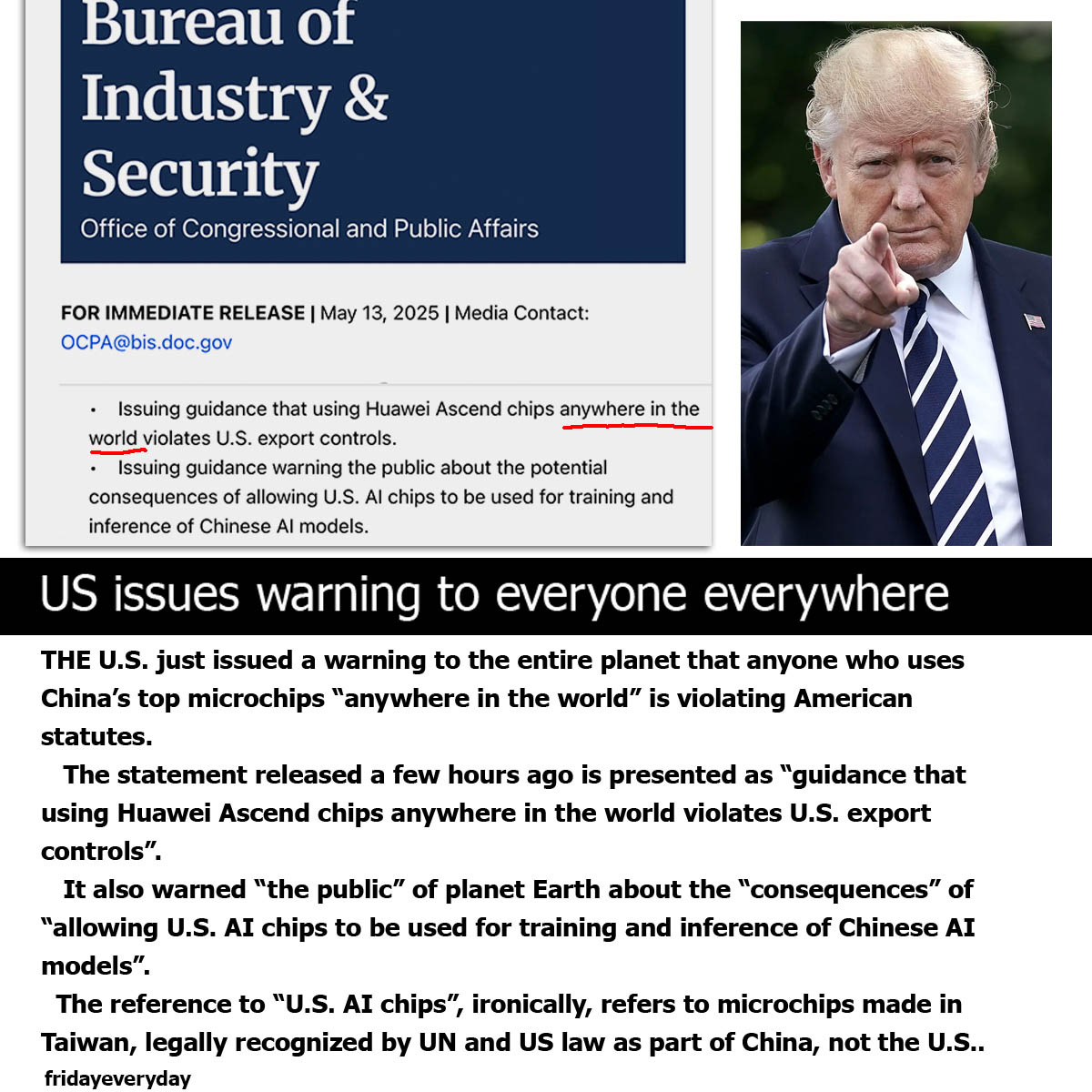China's Week, May 19
First quantum network. First orbiting exascale computer. Home sales up 23%. Clean power growth lowers CO2 emissions–finally!
Science & Technology
The first orbiting exascale supercomputer collects and processes data in space. Currently, less than 10% of data gets to Earth–with significant delays.
More than twice as many satellites launched YTD, 111, in 2025 as in any previous year.
The first distributed cryptography system–Beijing to Hefei– integrates Quantum Key Distribution and Post-Quantum Cryptography for communication, data protection, identity authentication.
Energy efficient, low-cost technology extracts 100% of uranium from seawater.
China installed two thirds of the world’s new clean energy capacity last year. In Q1 2025 China generated 951 TWh of clean electricity, or 39% of electricity generation.
Huawei’s 11 fabs include foundry services, DRAM, IoT, and mobile chips, produces DRAM and foundry wafers and operates 10 research sites with limited manufacturing.
Economy & Trade
China’s economy is not export-dependent. It’s driven by autonomous investment-driven demand that spurs private capital formation and real income growth.
China’s 4,500 AI companies are worth $84 billion–from chips, algorithms, data, platforms and applications and will need 6 million AI professionals by 2030.
Q1 digital industry revenue hit $1.2 trillion, up 9.4% YoY, with 4.4 million 5G base stations installed and user penetration rate of 76%.
YTD sales of existing homes in 90 cities rose 23% YoY.
Society & Environment
Team China won first place at EGMO 2025, the European Girls' Mathematical Olympiad. Team USA, below, was a close second.
Shanghai residents propose bus routes, others to opt in or vote. If a route attracts 15-20 passengers per trip, the route goes live. 220 routes have already launched.
A national, tiered AI education system encompasses primary, junior high, and senior high schools.
A bionic robotic fish swims like a real fish, protects the Yangtze River. It collects ecological data, providing key support for water environment governance.
For the first time, clean power growth lowered CO2 emissions despite rapid demand growth. Emissions fell 1.6% YoY in Q1 and 1% in the latest 12 months.
First cross-provincial off-peak green electricity trading: Xinjiang sold 12 MKWh of green electricity to Beijing at its winter evening peak of consumption, 5 pm.
Governance
60,000 urban renewal projects, costing $403 billion are reviving old residential communities, blocks, factory areas and urban villages in cities.
How smart are EVs? Regulators’ mandatory requirements better protect the public.
Revisiting the Bancor: A New Digital Universal Settlements Denominator (dUSD) for the 21st Century? Alternative payment institutions are being developed under the BRICS Clear rubric.
Taihe's pharmaceutical industry transformation shows that county governments with limited resources should adapt industrial policies to their unique economic conditions.
Geopolitics
China will provide a $10 billion credit line to support CELAC (Caribbean & LatAm) countries' development, 3,500 government scholarships, 10,000 training opportunities, 500 International Chinese Language Teachers Scholarships, 300 training places for poverty reduction professionals, and initiate 300 "small and beautiful" livelihood projects, actively promote vocational education cooperation programs.
Defense
The National Key Laboratory for Agriculture, Forestry and Biosafety, under construction in Fujian, boosts biosecurity capabilities in the face of growing threats from harmful organisms and invasive species (and US bioattacks dating to 1949).








